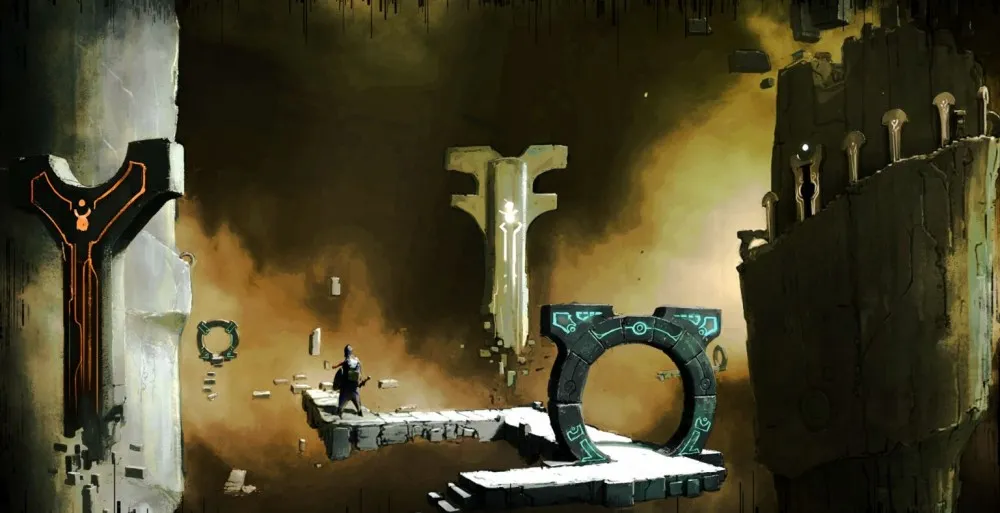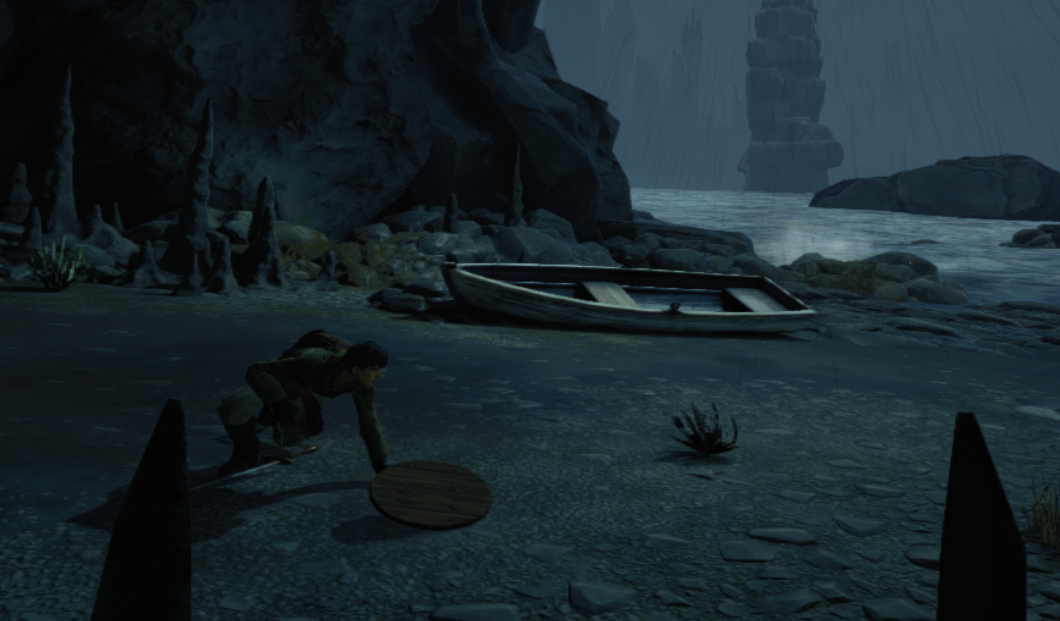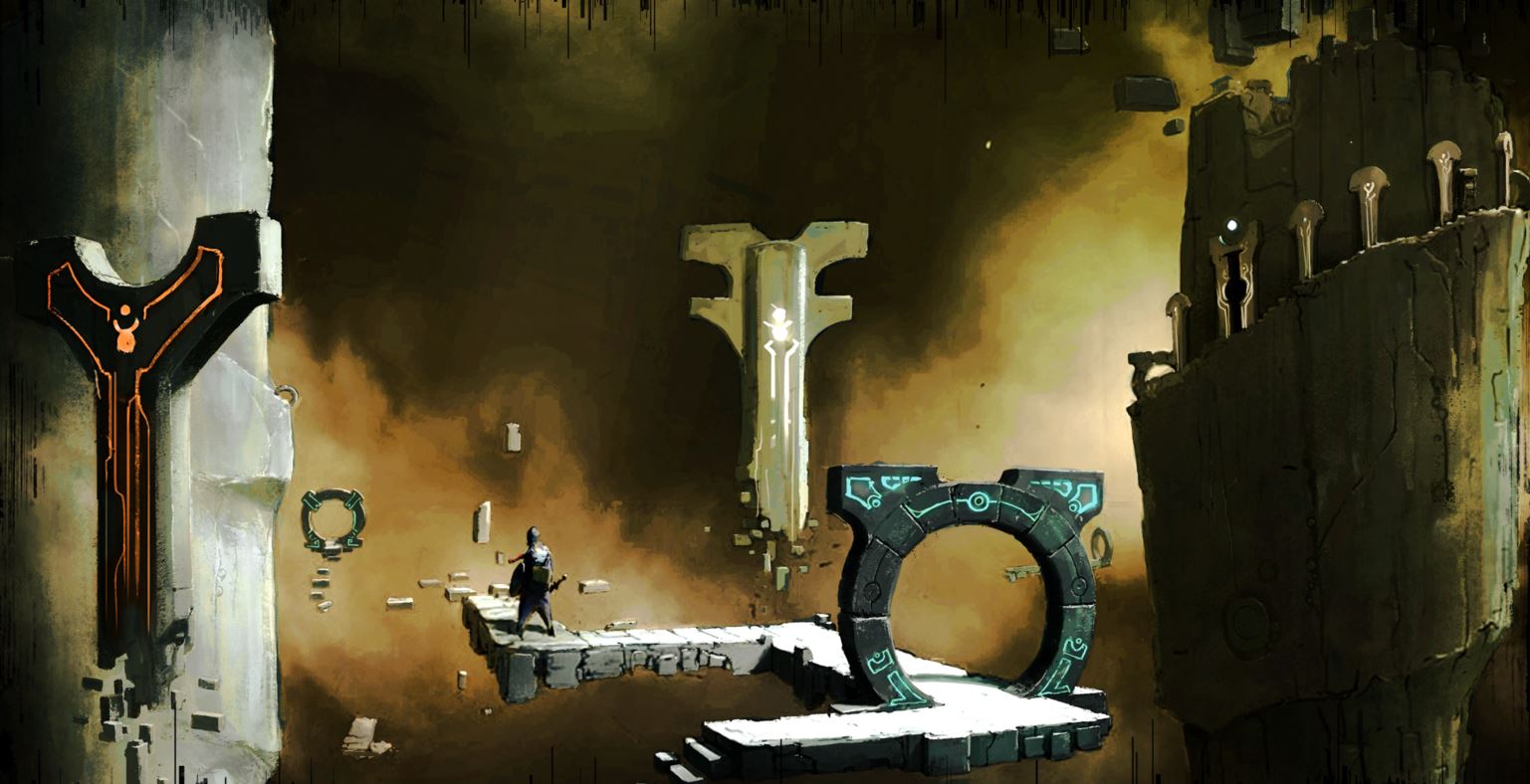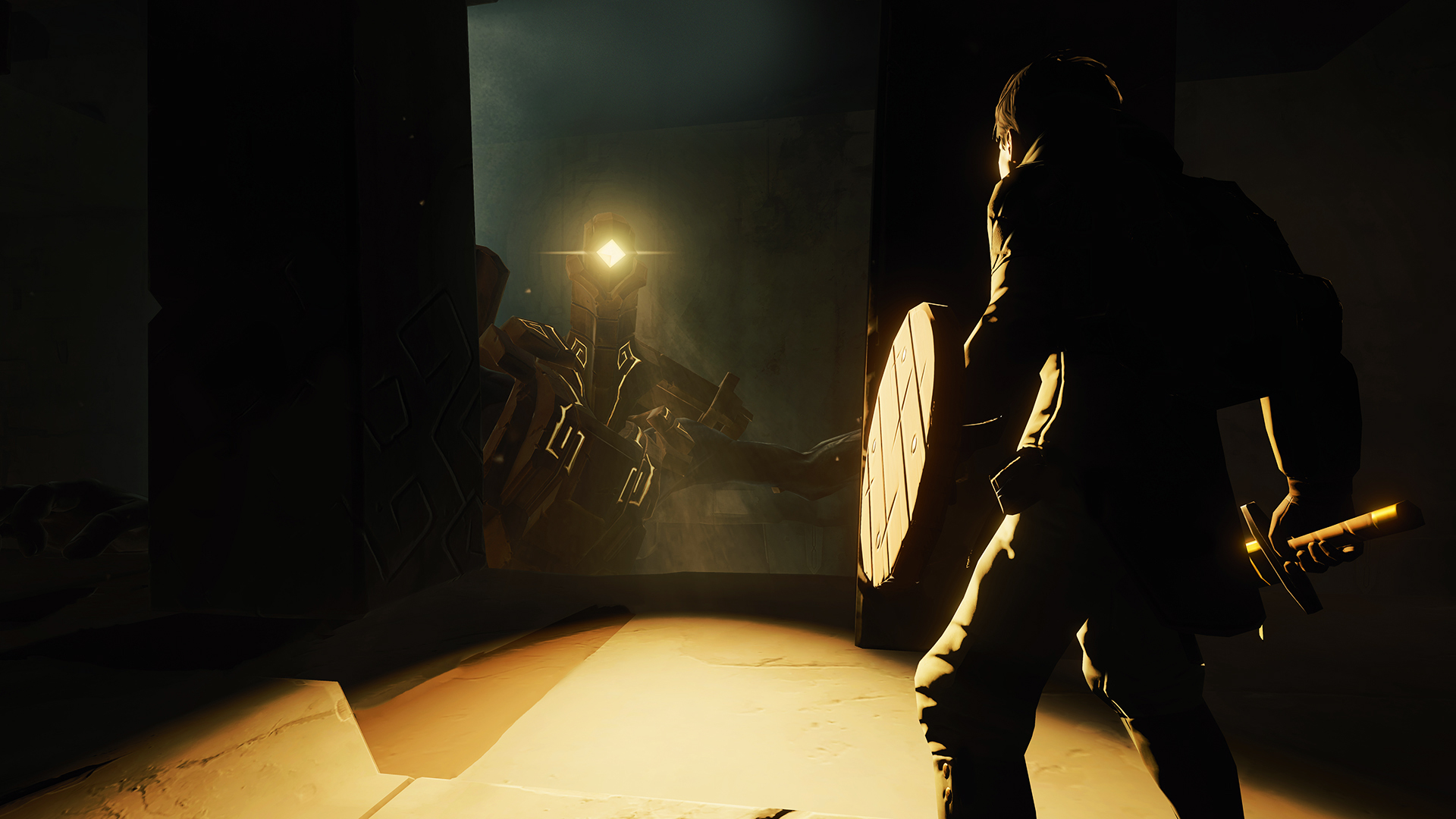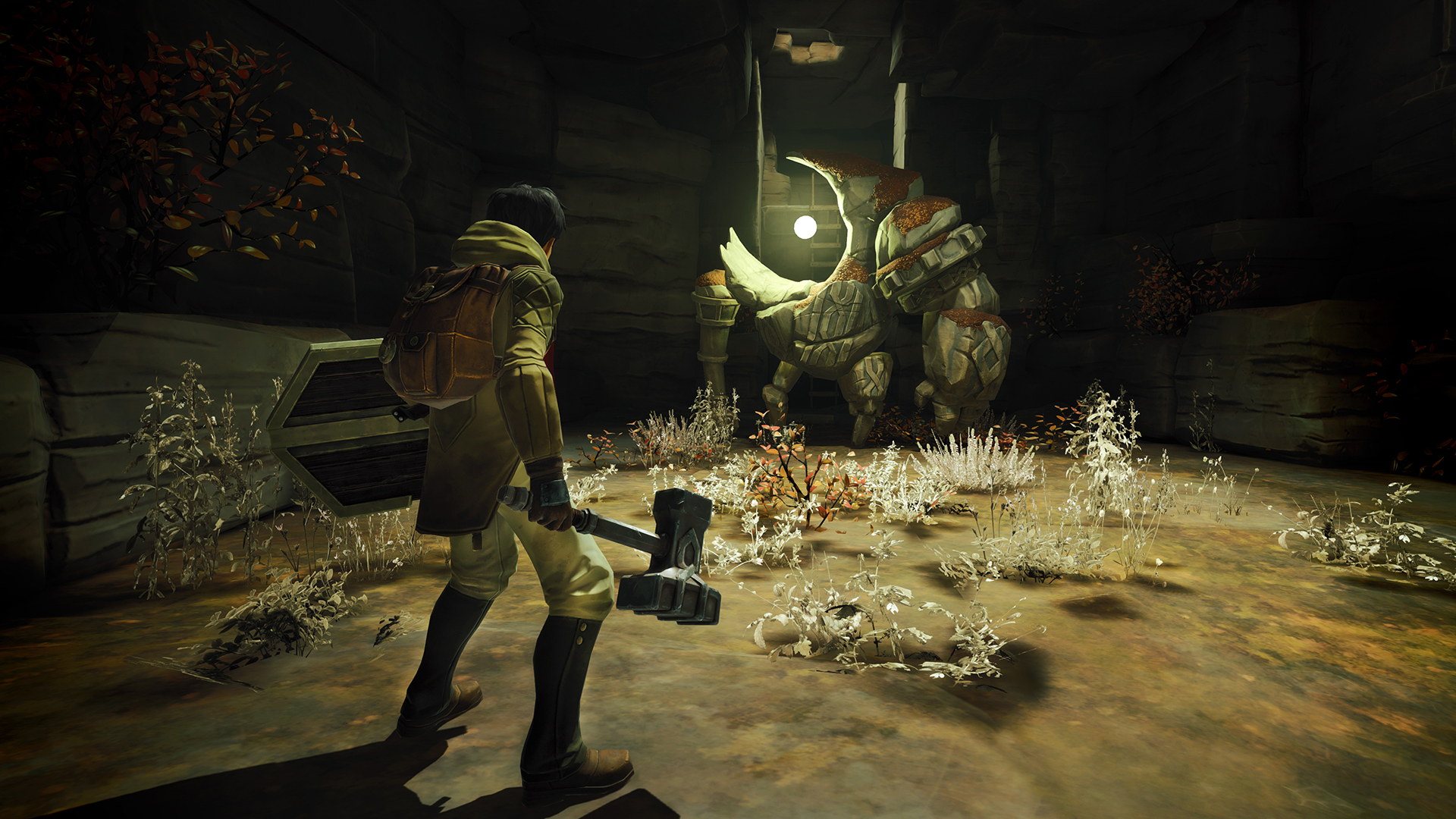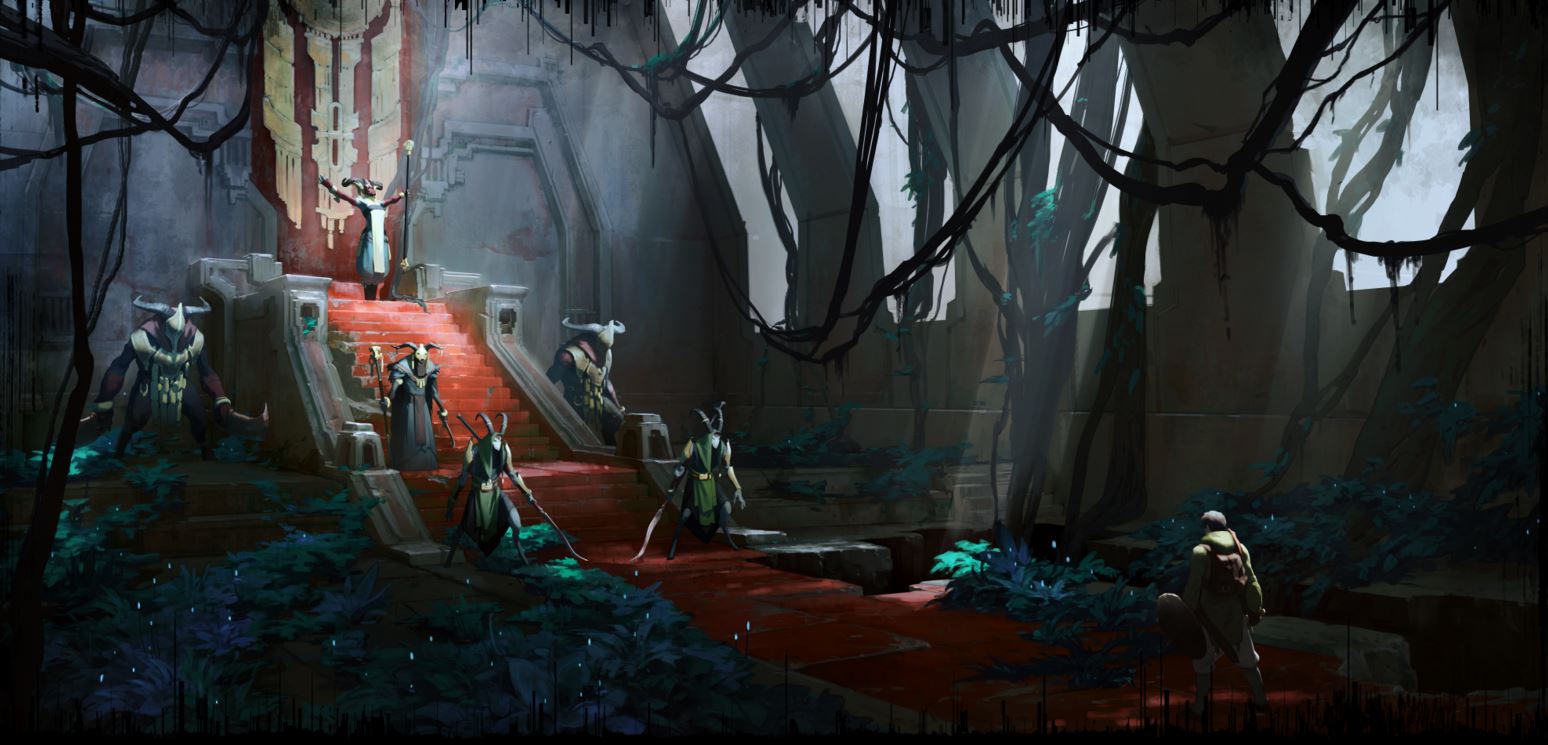Studio: Gunfire Games
Platform: Oculus Rift
Price: $49.99
Release Date: March 28, 2016
—
The corridor was dark, my heart beat was thundering in my ear and I was at the end of the line after hours of intense and nerve-wracking dungeon delving. I’d been defeated and forced to restart from the last checkpoint several times by this point, as my once young protagonist was now nearing the age of 40 with a full beard and gravely voice. And to make matters worse, I was surrounded. Four enemies encircled me, with my back against the wall, closing in for the kill.
Luckily, my instincts took over and I dodged an incoming attack. Then, I followed that up with a counter, parried another strike with my shield, and countered again, which fully charged my magic. I quickly ignited my axe with roaring flames and performed an onslaught of flourishing strikes against all four enemies, finally conquering the gang of foes and breathing a hard-earned sigh of relief.
Moments like this are common in the cruel, intense and often unforgiving world of Chronos. As the brightest and most promising member of your people at the end of the world, you’re single-handedly tasked with adventuring into the depths of an ominous dungeon to reach the end and slay the dragon that threatens the world as you know it.
Chronos takes place in an alternate reality version of Earth in the distant future that consists of a combination of fantastical elements such as magic and mythical creatures with advanced technology and seemingly robotic adversaries. The setting evokes a unique and compelling tone that can best be described as a weird, yet intriguing, combination of elements found in other series like The Legend of Zelda, ICO, and Dark Souls, if such a thing is even possible.
It’s a simple premise that’s augmented by some beautiful art direction, clever mechanics, and rewarding progression. The entire game takes place from the third-person perspective – you won’t be seeing the world through the eyes of your character in this one. Instead, each room is designed with the camera locked at a specific point that can’t be altered, similar to the older Resident Evil games, or God of War, for modern examples.
Chronos sometimes feels like a game that was developed without VR in mind.
In theory it makes sense – don’t move the camera too much, or else players might get sick in VR – but in practice it often feels incredibly restrictive. On several occasions I accidentally walked off ledges, missed clues, or got turned around completely due to the shifting perspectives and locked camera angles. While it affords an interesting mechanic for certain puzzles and allows the developers to frame scenes in some truly awe inspiring ways, it feels like more of a hindrance than a blessing. Watching the evolution of puzzles as game designers learn this new language of communicating with players through VR and not a flat screen should be very interesting.
In this way, Chronos sometimes feels like a game that was developed without VR in mind. The menus are giant black boxes that obscure everything in front of you. There is no in-game explanation for who you are as the viewer or why you’re able to peer into this world and spy on the main character throughout his journey. In fact, the opening cut scene has a character looking and speaking directly to you – while you’re in the first-person and able to look around – which makes it feel like you’re supposedly embodying the main character as he or she explores the dungeon.
The best parts of Chronos lie entirely outside of the fact that it’s a VR game.
However, once your quest begins, the disconnected third-person perspective rids you of any sense of true presence you might initially feel. Chronos is beautiful and engaging, but it doesn’t really take full advantage of VR as a medium, sometimes to the game’s detriment.
This isn’t to argue that third-person games can’t work in VR – they certainly can, as Lucky’s Tale surely proves, but VR wasn’t utilized in a way that particularly enhances or improves Chronos in any particular way. That being said, the best parts of this experience lie entirely outside of the fact that it’s a VR game.
Naturally, as an RPG, Chronos allows you to not only gain experience by defeating enemies and level up to gain attribute points that can be spent to increase your Strength, Agility, Magic, or Vitality, in traditional RPG fashion, but the developers also created a compelling ageing system as well. Since your entire life is devoted to completing this dungeon and defeating the dragon, each time you fail, you’re sent back to the last checkpoint crystal you activated. However, an entire year also passes.
With that increase in age comes physical character changes, like facial hair, hair color alterations, and a deeper voice, as well as attribute changes. Every 10 years you gain access to a special perk that gives you bonuses to different aspects of your development and the older you get, the wiser you become, which augments your magical abilities as well. It’s an elegant and simple system that does a lot to provide a real sense of progression and attachment to your character beyond just an obscure level.
With such a deep progression system, it’s disappointing how little there is to find and loot throughout the journey. Creation entails choosing a gender and starting weapon – that’s it. You’ll never find any other pieces of clothing or armor throughout the entire experience and even the weapon changes are few and far between. Creating a game with so much depth and content to be available on launch day was surely no small task, but I was left feeling like the lack of items and customization was a missed opportunity, all else considered.
Chronos is a tightly-crafted and deep roleplaying game unlike anything else available for VR at the moment.
Due to the lack of variety in terms of weapons or armor, you’ll spend plenty of time truly mastering the nuances of Chronos’ combat system. Deciding between light and heavy attacks, which magic to equip and when to use it, or even just knowing when to block, parry, or dodge, is a special language that will likely sound familiar to those fluent in Dark Souls, but the enemy types provide enough variety to keep you on your toes. Once you start getting comfortable with a certain adversary and have their attacks and patterns memorized, you’ll often come across a completely new challenge.
Chronos affords a hefty chunk of gameplay time with over 12 hours of content for a single playthrough, although that could easily be extended if you explore as thoroughly as I usually prefer to with these sorts of games.
While Chronos doesn’t quite redefine how third-person action roleplaying games are played, it’s an engaging and well-made entry for a new medium that’s lacking in robust gaming experiences. And while Chronos may be the only real Rift launch game with more than a couple hours of singleplayer content, it’s still a good game in its own right with plenty of compelling ideas to keep you pushing through to the very end. Chronos is a tightly-crafted and deep roleplaying game unlike anything else available for VR at the moment.
Read our Game Review Guidelines for more information on how we arrived at this score.

